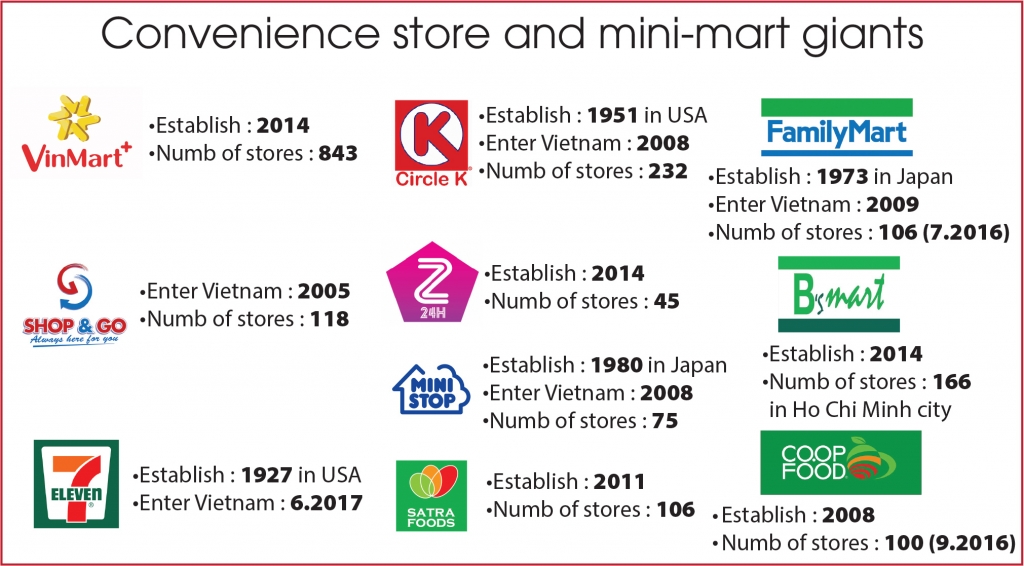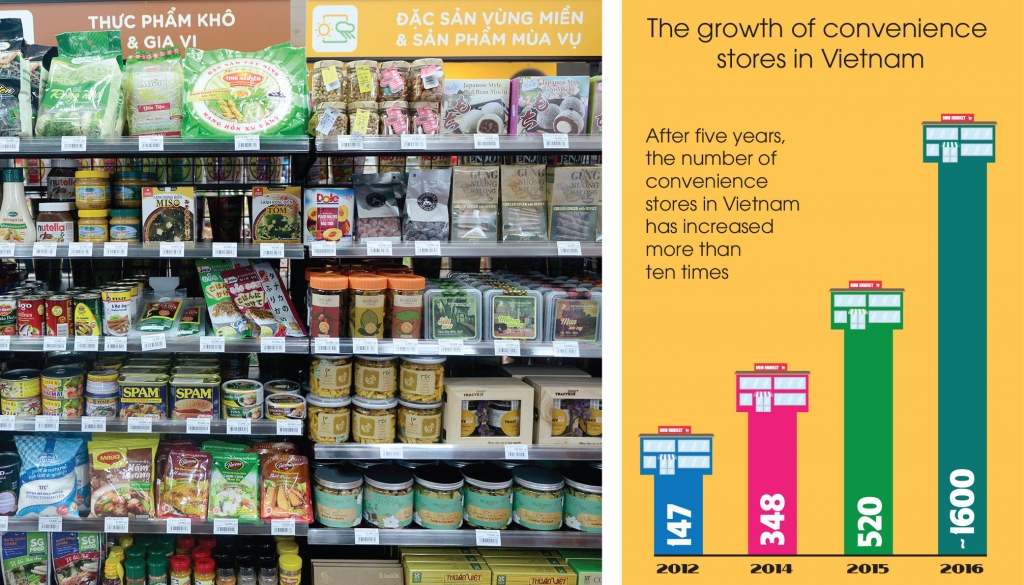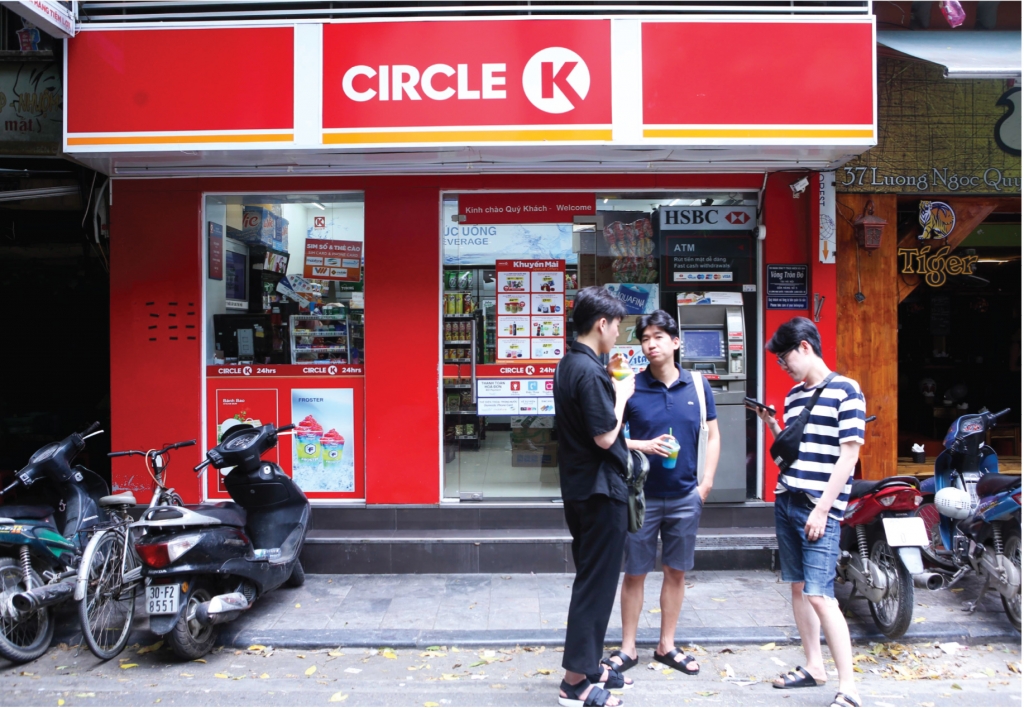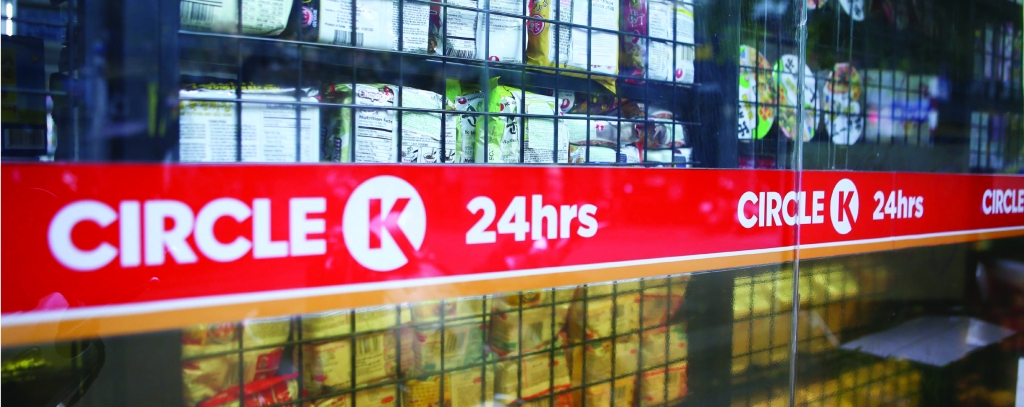 |
| As the third most populated countries in the Southeast areas, Vietnam is a luring attention from foreign giants in the retail market, and currently in Vietnam, they have opened numerous chains of convenience stores, which raises concerns over the survival of supermarkets and traditional grocery stores. |
 |
| Circle K—one of the chains with the highest number of convenience stores in Hanoi—has a store in a prime location near Sword Lake, one of the most expensive areas in the capital of Vietnam. This convenience store is in a four-storey house, with the two lowest storeys belonging to Circle K which customers can visit from two entrances from two streets. On the first storey, Circle K is selling some basic goods, such as food products, cosmetics, necessities, and confectionary with various choices of goods and prices. |
 |
| Chain of convenience and minimarts in Vietnam (Source: Forbes Vietnam - April 2017) |
| The second floor is where customers can enjoy the food they bought in Circle K. With the neat furniture, a view to Sword Lake, and the cool fresh air, it is easy to understand why youngsters love to visit such kinds of convenience stores to buy and enjoy food, especially during the hot summer. Along the routes of Hanoi's ancient streets and walking streets, at almost every crossroads there is a Circle K convenience store, occupying prime locations. Nevertheless, they have to face a measure of competition from nearby traditional grocery stores. Thanh, owner of one of these grocery stores, said that most of her customers are nearby residents and Circle K is mostly popular among youngsters. However, since these convenience stores started popping up next to her small shop, her revenue has declined significantly. |
 |
| Various products in convenience stores (Source: Forbes Vietnam - April 2017) |
| Along with supermarkets and shopping malls, opening convenience stores is one of the strategies that many brands apply to gain market share in the Vietnamese retail sector. Convenience stores have smaller acreage than supermarkets, but are larger than most grocery stores. There are more and more convenience stores in residential areas, around apartment buildings, in both big and small streets, to meet the needs of compact, modern shopping. |
 |
| Most customers of Circle K are youngsters and tourists from foreign countries |
| Of all the convenience stores in the market currently, the VinMart+ chain highlights its brand by the exclusive distribution of clean vegetables from VinEco, while Circle K attracts young customers by the modern space which is open 24/24, allowing customers to enjoy the shop’s food right on the spot. |
 |
|
| On June 15, 2017, 7-Eleven officially opened its first store on the ground floor in Saigon Trade Centre in Ho Chi Minh City. This was a milestone first step of the Japanese retailer Seven & I Holdings Co. into the Vietnamese market. A new convenience store chain entering the Vietnamese market in itself is nothing remarkable, but a veritable herd of such chains joining the domestic retail sector raises questions about the future of traditional grocery stores. |
 |
Since a wide range of foreign retailers entered the Vietnamese market, traditional grocery stores seem to be left behind due to smaller scales and fewer products. However, despite some changes in consumers' habits, traditional grocery stores are still one of the main shopping channels of Vietnamese people. Small scale may turn into one of the competitive advantages of traditional grocery stores because they draw low administration costs, keeping prices are a little more reasonable. Many household items, such as face cleaners and shampoos, are more expensive in convenience stores. When choosing between the same products, customers are likely to opt for the cheaper ones. Besides, more than 96 per cent of Vietnamese people own at least one motorbike and use them frequently. Thus, parking to visit a convenience store is annoying, while at the traditional grocery stores customers can call out what they need and the seller puts the items together ready to go. In addition, when a traditional grocery store lies in a location that has fewer stores around, sellers may remember customers' habits, making them happy and encouraging them to return. Despite these strengths, convenience stores are becoming the direct rivals of traditional grocery stores. HUY PHAM |
 |